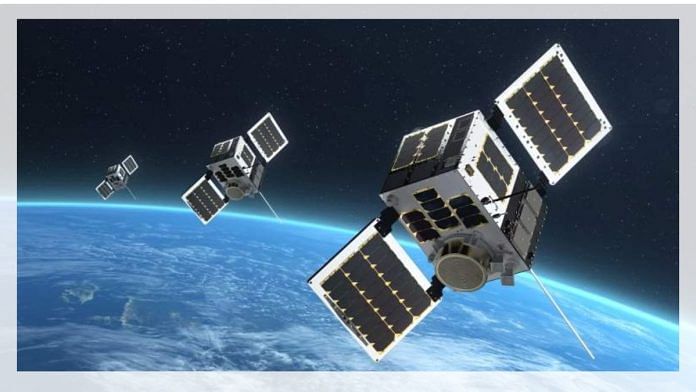New Delhi: As part of the Quadrilateral Security Dialogue or QUAD, the US State Department has approved the sale of the HawkEye 360 technology to India, with the Indian Navy set to gain Indo-Pacific maritime domain awareness, aided by a growing constellation of satellites in low Earth orbit.
The deal costs an estimated USD 131 million. A US Defence Security Cooperation Agency statement said India requested to buy the SeaVision software, including its preferred software enhancements, training as a technical assistance field team, remote software, analytic support, documents, and other logistics and programme support elements.
The proposed sale, the statement said, would improve Indian capabilities to meet current and future threats by bolstering its maritime domain awareness, analytical abilities, and strategic posture.
Equipped with the technology, the Indian Navy can improve its checks on illegal fishing, smuggling, trafficking, and piracy.
The US defence agency also said the sale would help strengthen US-India ties and ensure the security of a major defence partner that continued to be a key force for political stability, peace, and economic progress in the Indo-Pacific and South Asian regions, in a reference to India.
What is HawkEye 360
HawkEye 360, an American geospatial analytics private company headquartered in Herndon, Virginia, collects and analyses radio frequency (RF) signal location with a constellation of satellites.
It is the first commercial company to detect, geolocate, and characterise a wide range of RF signals from low-earth orbit satellites, working in clusters of three to provide space-based rapid frequency (RF) sensing and delivering early indicators of human activities and greater awareness through the mapping of RF energy.
Now, most navies, including India’s, use the automatic identification system (AIS) to monitor shipping activity. However, some vessels are known to ‘go dark’ and turn off AIS to roam undetected in disputed areas. This could create a “dead zone”, giving the monitoring parties a false sense of ongoing activities where none exist.
The Indian Navy now uses P8i aircraft and Sea Guardian drones to monitor strategic locations and detect vessels keeping their AIS switched off.
Among the services offered by HawkEye 360 are maritime domain awareness and analytics that combine AIS with unique RF data to improve monitoring and detection of ‘dark vessel’ activity, supporting organisations in suppressing and interdicting illegal fishing, smuggling, trafficking, piracy, and more.
It means HawkEye 360 can track vessels, which have switched off their AIS, on the high seas. The new technology will improve monitoring of critical areas by the Indian Navy. The navy will get automatic analytics for vessels that show gaps in AIS over an extended time multiple times a day, and the ability to correlate unknown signal activity and potential suspicious behaviour.
In July 2024, after the four-nation Quad foreign ministers meeting in Tokyo, the Grouping announced expanding its ambitious Indo-Pacific maritime domain awareness to the Indian Ocean region to monitor the strategic waters amid concerns over China’s growing forays.
The Indo-Pacific maritime domain awareness, whose launch was first announced in May 2022, allows partner countries to fully monitor waters on their shores and ensure peace and stability. The initiative will supply data to counter illicit naval activities and respond to climate-related and humanitarian events.
The Indian Navy earlier established the Information Fusion Centre in the Indian Ocean Region in 2018 to track shipping traffic and other critical developments, effectively.
(Edited by Madhurita Goswami)
Also Read: In touch with both India & Pakistan, US calls for ‘responsible’ solution after Pahalgam attack






